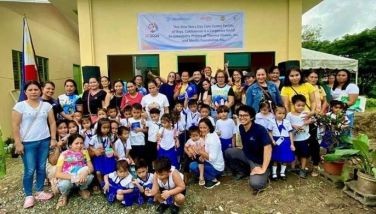The general academic strand
Right now, most high school graduates know what course they want to pursue in college. In fact, when they take entrance examinations and when they first fill in enrolment forms, they are asked what major they want for themselves.
That is exactly what will happen to most Grade 10 students in the K to 12 curriculum. Since Grade 10 is the equivalent of the current Fourth Year High School, nothing has really changed. Naming Grade 11 Senior High School (SHS) rather than First Year College is just a change in name, as far as career planning is concerned (though the curriculum is very different).
There are a few (not many, but enough) students in college now that transfer from one major to another. Some (again, not many, but enough) entering college students do not even know what they really want to major in. All they know is that they want to have a college degree. What that degree is does not really matter to them, as long as they get a college diploma.
This, of course, is one of the anomalies about education that K to 12 wants to correct. Taking college for the sake of taking college is like falling in love because being in love feels good. The object of love is really irrelevant. (The best example is Romeo in William Shakespeare’s “Romeo and Juliet”; he drops Rosaline as the object of his never-dying love the instant he sees Juliet.)
Since we cannot force anyone not to spend money on a college education even if s/he does not need it or does not know what to do with it, we need to have a way for the undecided. This is what the fourth Strand in the Academic Track of SHS is all about.
Students that cannot make up their minds about which of the other three Strands (Accountancy, Business, and Management or ABM; Humanities and Social Sciences or HUMSS; Science, Engineering, Technology, and Mathematics or STEM) they want to enter will take the following General Academic (GA) specialized subjects:
Humanities 1 and 2
Social Science
Applied Economics
Organization and Management
Disaster Readiness and Risk Reduction
Elective 1 and 2
Work Immersion / Research / Career Advocacy / Culminating Activity
The Humanities subjects can be any two of the following specialized subjects in HUMSS: Creative Writing / Malikhaing Pagsulat; Introduction to World Religions and Belief Systems; Creative Nonfiction; Trends, Networks, and Critical Thinking in 21st Century Culture.
The Social Science subject can be any one of the following: Philippine Politics and Governance; Community Engagement, Solidarity, and Citizenship; Disciplines and Ideas in the Social Sciences; Disciplines and Ideas in the Applied Social Sciences.
The two Electives can be taken from the specialized subjects of any other Track or Strand, provided each school offers more than two options. (If there were only two options, then the Electives would cease to be electives but become, in an oxymoron from Philippine English, “Required Electives.”)
The Applied Economics subject is similar (but not identical) to the subject in the old General Education Curriculum (GEC). In this subject, students learn how to identify the basic economic problems of the country, how to explain market structures (such as perfect competition, monopoly, oligopoly, and monopolistic competition), and how to formulate strategies to minimize negative impact and maximize positive impact on a business in the community.
The Organization and Management subject allows students to use Political Economic Social and Technological (PEST) and Strengths Weaknesses Opportunities and Threats (SWOT) analytical tools. It also goes into details such as doing performance appraisals, adopting effective rewards systems, managing change and diversity, recognizing different management styles of Filipinos and non-Filipinos, and starting a small-family business.
Disaster Readiness and Risk Reduction, which is a modified version of the Core Subject for STEM students, allows students to do things such as interpret different earthquake and hydrometeorological hazard maps, identify fire triangles, and develop a community preparedness plan.
Of course, students opting to choose the General Academic Strand will be minimally prepared to enter higher education. They will still have problems qualifying for certain majors. For example, they cannot go into a STEM-type college course, because they will not have had Calculus. They cannot go into Accounting, because they would not have had the introductory accounting subjects of the ABM Strand.
They will have problems catching up with the students that have taken the appropriate introductory subjects in SHS and are, therefore, prepared to tackle head-on the various majors in college. That situation, however, is not any different from what it is now. There are (only a few, but enough) students in college now who still do not know what they want to be when they join the adult world. They transfer from one course to another, sometimes for flimsy reasons (e.g., they do not like the teachers in their first announced major), sometimes for major reasons (e.g., they failed a couple of major subjects, proving that they do not have the aptitude for their original major).
Through the General Academic Strand, the K to 12 curriculum has made provisions for these immature students that have not yet thought seriously about their future. (To be continued)
- Latest




























